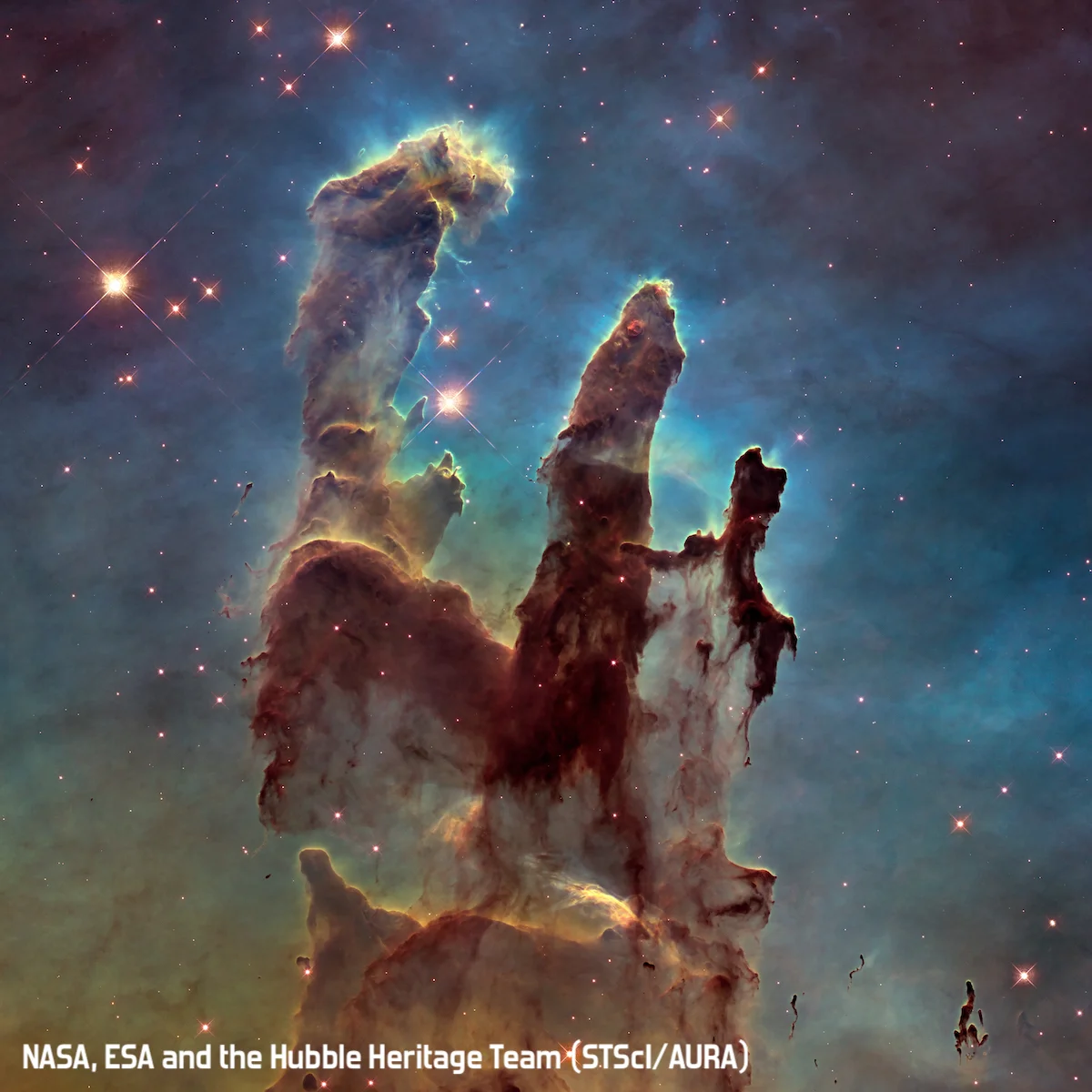The Earth and the Sun and all the other planets feel like familiar friends who've been around forever. Wind the clock back a few billion years though, and things were very different. The infant Sun was prone to highly energetic tantrums, the gas giants were acting like thugs and throwing their weight around, and the rocky planets were just trying to gather enough dust and ice in one place to actually stay in one piece. It's not clear at all how we got from such a chaotic, violent early solar system to the relatively tranquil place we call home today. Fortunately, Emily's here with the latest models and theories to clear it all up for us.
25: Picture The Sky
Ever since early humans gazed in wonder at the majesty of the night sky, astronomy has been a particularly visual science. Modern astronomers deal in vast quantities of data, measuring the cosmos with visible light and invisible neutrinos, x-rays and cosmic rays, radio waves and gravity waves. Yet its the glorious images of astronomy — the planets, nebulae and galaxies — that capture our minds and fuels our imaginations. In this episode we discuss what makes astrophotography so important, and Emily lists her Top 4 mind-blowing cosmic images.
24: Black Holes Feeding On Colliding Galaxies
There are a lot of galaxies in the universe — billions and billions of them, in fact. And many of them are in the process of collision: some collided long ago, some are merging right now, and some will slam together in the distant future. When they collide, the supermassive black holes in their cores can collide and merge too — and that's a pretty extreme event. Studying how fast these mergers take place is changing astronomers’ models of galaxy formation and evolution.
23: Syzygy Live! from YorNight 2018
A very special live event from YorNight 2018, the University of York's celebration of research at beautiful King's Manor. We talked about exoplanets — that is, planets around other stars — and Emily shared her top three exoplanets of all time. Chris finished by strapping on a guitar and going all Chris Hadfield with The Exoplanet Song. A wonderful, enthusiastic audience of young and old (many in astro-themed fancy dress for the occasion!) packed out the theatre, asked brilliant questions and cheered along.
22: How To Measure The Universe
We've been so comfortable throwing around facts like "the Sun is 8 light seconds away" and "the nearest star is 4 light years away", it's easy to forget that measuring cosmic distances isn't as simple as pulling out a tape measure. So how *do* you measure how far it is to the moon, or the next star, or a distant galaxy? Emily gives us her top five rungs on the Cosmic Distance Ladder.
21: BepiColombo goes to Mercury
Mercury: closest planet to the Sun, a small, uninteresting lump of rock ... or, an enigma, with a strange tidally-locked orbit, a core that's way too big, and a mysterious origin story that astronomers are slowly piecing together. Which is why it's Emily's favourite planet, and why ESA and JAXA are sending the fabulously-named BepiColombo spacecraft to take a closer look.
20: Photo of a Black Hole
At the centre of the Milky Way Galaxy lies a super-massive black hole. We know it's there, we can detect its effects on the galaxy and see nearby stars whipping around it at high speed. Last year, a worldwide collaboration of astronomers decided to try to take the first direct image of the black hole, merging telescopes spread across the planet into the equivalent of one giant radio dish. Did they succeed? We're still waiting on that image ...
19: Moons, Exomoons & Moonmoons
The Kepler mission found loads of exoplanets, and now astronomers are digging deeper into the data in the search for exo*moons* around those planets. All of which sends Chris and Emily on a deep dive into the detail of definitions: what's a moon, anyway? Do we know what a planet is? Or a star? Do astronomers actually understand anything at all?!
18: Mysterious Planet 9
17: Quantum Conspiracy Theory
Summer holidays are over, though Emily is still running around overseas enjoying the astronomer lifestyle. So Chris shares a story that tickled him this week, about a bunch of physicists and astronomers who showed that if quantum theory is just a cosmic magic trick played on researchers, that trick had to have been set up before the earth was even formed.











